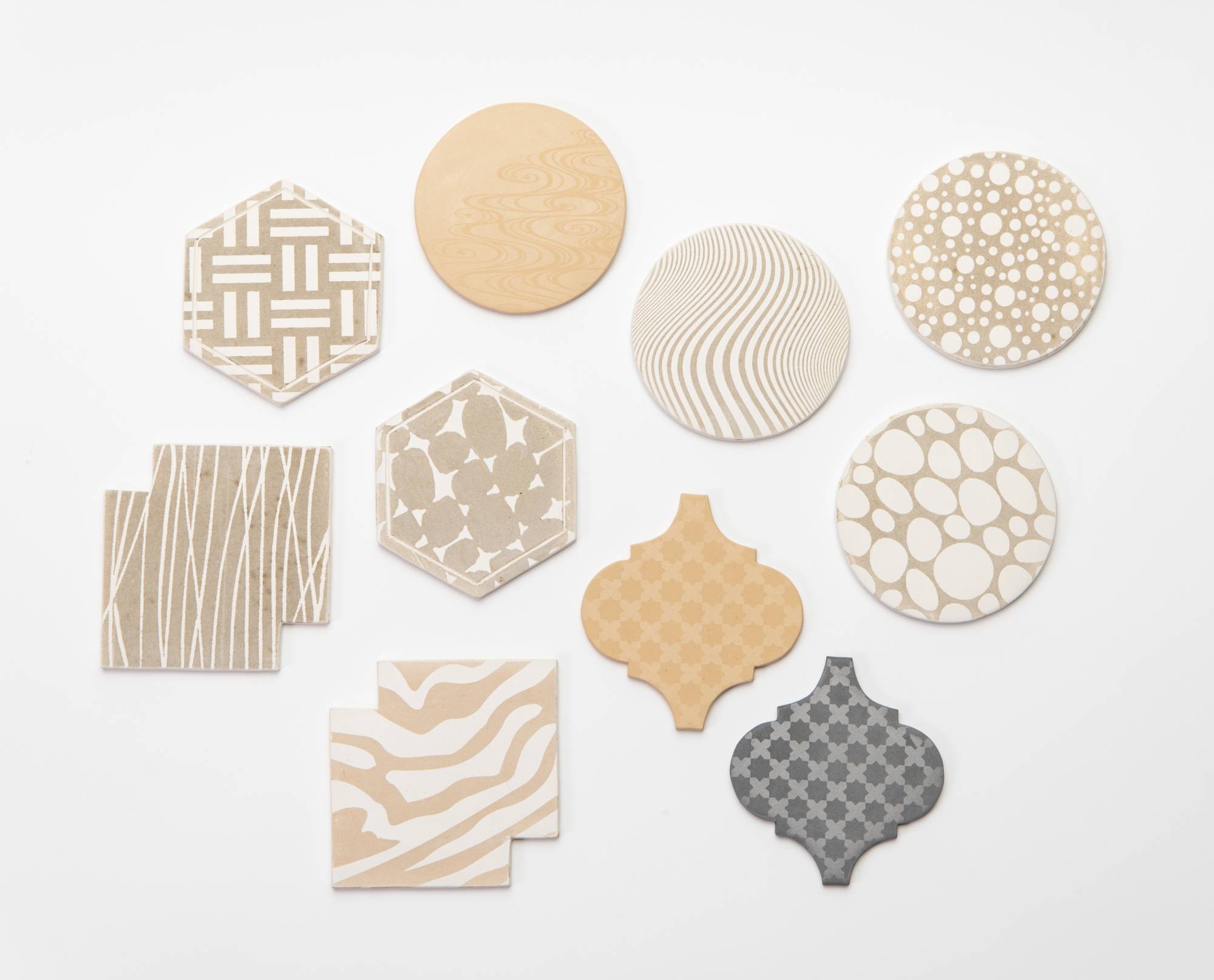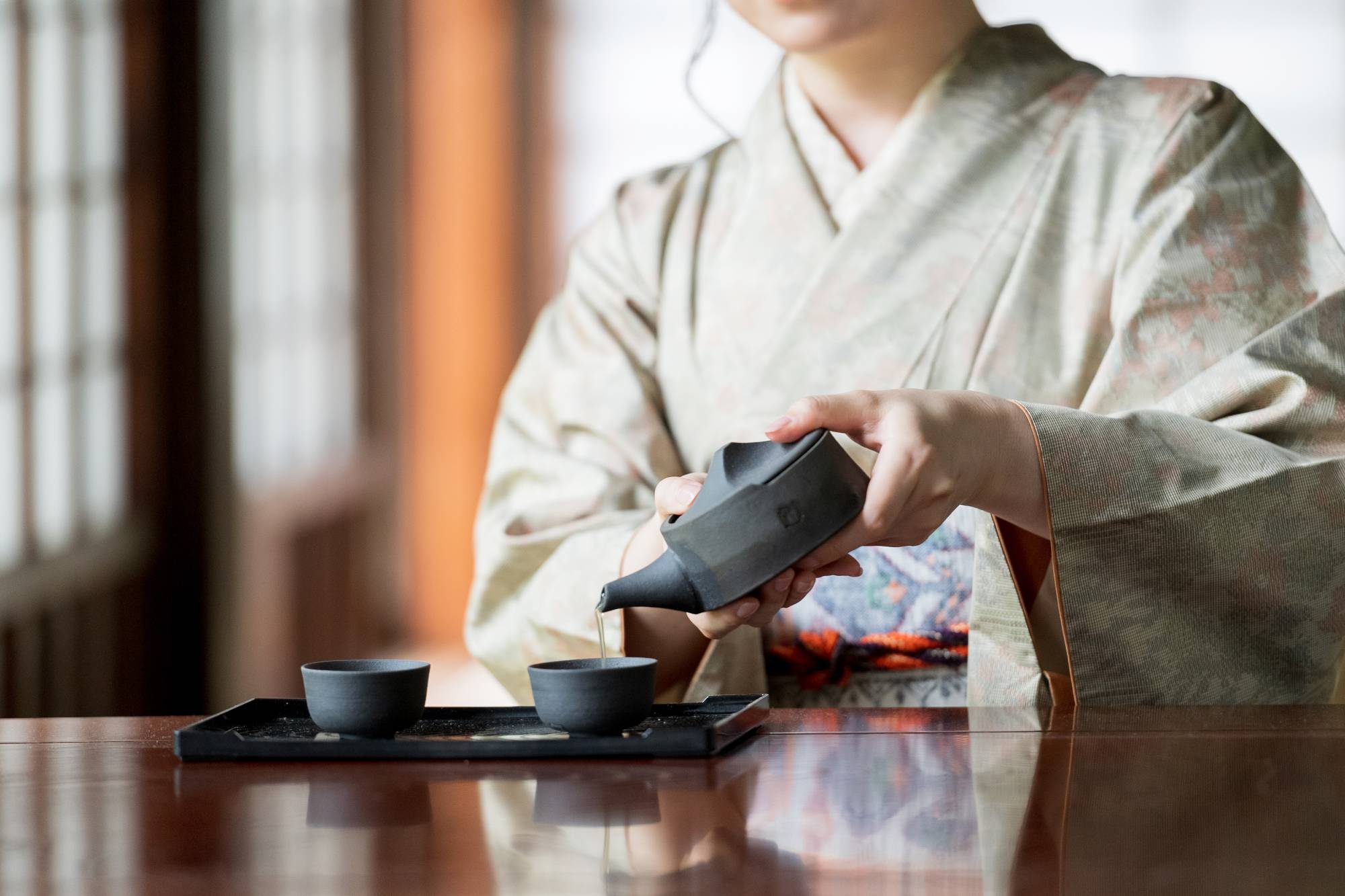Though Japan’s regional potteries have become internationally well known, there is one aspect of Japanese ceramics currently vying for more attention — the tile industry.
Dating as far back as the sixth to seventh centuries, tiles were once a sign of prestige and wealth reserved for temples and imperial buildings. Now an architectural staple, most are factory-produced, but many are still being made using traditional techniques. Some artisans are finding creative ways to showcase their wares to a wider audience.
The good dirt
Creatively directed by Glaettli Design Direction, Mino Soil is a new brand that promotes the ceramic industry of Tajimi in Gifu Prefecture. As part of what was once Mino Province, Tajimi houses numerous potteries producing Minoware in various styles, from traditional tea ceremony items to contemporary fine porcelain. It’s also the center of Japan’s tile industry, where tile purveyor X’S Corporation has collaborated with tableware manufacturer Izawa Corporation to launch Mino Soil, an upcoming series of interior products designed to highlight the potential of Gifu’s rich clay soil.
Mino Soil is marking its debut with three collaborative exhibitions with international designers, culminating in the launch of its products. The first show, held in Tokyo earlier this month, introduced architect Bijoy Jain of Studio Mumbai and his archeological exploration of clay as a material.
A huge piece of fossilized timber, still saturated in the water from the clay pit in which it was found, reminded visitors of the ancient and finite nature of clay soil, while surrounding landscape photos of Gifu mines by Yurika Kono illustrated its provenance. Large cubes of clay — some fired, some naturally dried — showcased how soils mined in a single region can result in a variety of texture and color, from off-whites to earthy browns and slate grays. Other works on display included giant spheres and other sculptural forms in unusual textures and colors — each examples of experiments by tile and pottery artisans.
Mino Soil has an intriguingly unhurried rollout, with the followup to Jain’s exhibition to be scheduled later this year, and few hints of the kind of products to be released early next year. But judging from the comprehensive approach of the brand, and its promise of high-profile artist and designer collaborations, there are sure to be some very interesting items. Keep an eye on the Mino Soil website for details of the next exhibition, which will focus on ceramic manufacturing techniques and processes.

All things Kyoto
Tableware items made by traditional kawara roof tile manufacturers are not new, but often the products are more rustic in style, an aesthetic that suits the texture of roof-tile craftsmanship. Asada Kawara Factory’s Kyoto Roof Tile Coaster, however, brings together kawara knowhow with a new decorative technique and contemporary design.
Originally debuted as part of the Kyoto Museum of Crafts and Design’s New Era Crafts Kyoto booth at the Tokyo International Gift Show in February, the Kyoto Roof Tile Coaster lineup is just one of 43 projects developed by craft industries with the aid of the Kyoto City Traditional Industries Support Program.
It takes Asada Kawara Factory’s unique technique of decorating silvery gray ibushi tiles with Kyo-yūzen silk-screen printing and applies it to a range of different clays for a series of patterned coasters, all designed by Yoshito Nakano of the Kyoto Institute of Technology and his students.
To make the coasters more absorbent, a porous soil was added to the clay and firing temperatures were adjusted, but the colors — beiges, browns and grays — are all naturally derived from soils used in the tiling industry. Even the screen-printed patterns are produced with clay pastes, not pigments. The result is a collection of artistic pieces, with Nakano and his students’ designs drawing inspiration from geometry and nature, including stripes, pebbles, waves, even a weeping willow. These are printed on familiar tile shapes, such as circles, arabesque diamonds and hexagons.
The coasters are currently only available at the Asada Kawara Factory workshop, but to learn more about them and other New Era Crafts Kyoto items, visit the project’s dedicated website.



Tea and tiles
Shizuoka Prefecture-based roof tile manufacturer Kawara Iki spent two years developing the Suiga kyūsu, a striking black Japanese teapot made in collaboration with tea farmer Amma Seicha. Designed by Yuto Tsukamoto, a fourth-generation kawara artisan, the teapot’s unusual lid is inspired by Mount Fuji, with indents evoking the shape of Shizuoka Prefecture’s Suruga Bay, from which the mountain can be viewed. Unlike most teapots, it has no handles, so it can be easily used with the right or left hand, and it has a ledge at the front to prevent the lid from slipping off while pouring.
The connection between roof tiles and tea is not as arbitrary as it may seem. The first Japanese raku tea bowl is believed to have been made by Chojiro, a 16th-century roof tile maker under the tuition of the tea master Sen no Rikyu at the Jurakudai palace in Kyoto. Roof-tile clay is also able to withstand bacteria and the elements, making it resilient enough for tableware, and carbon — an element that gives ibushi kawara tiles its silvery gray sheen — can absorb caffeine and catechins. Of course, this all has to be modified for modern tableware. For the Suiga kyūsu, Kawara Iki mixes carbon into a local tile clay that has been blended with other clay to make it even more durable.
In a time of both misinformation and too much information, quality journalism is more crucial than ever.
By subscribing, you can help us get the story right.
SUBSCRIBE NOW


